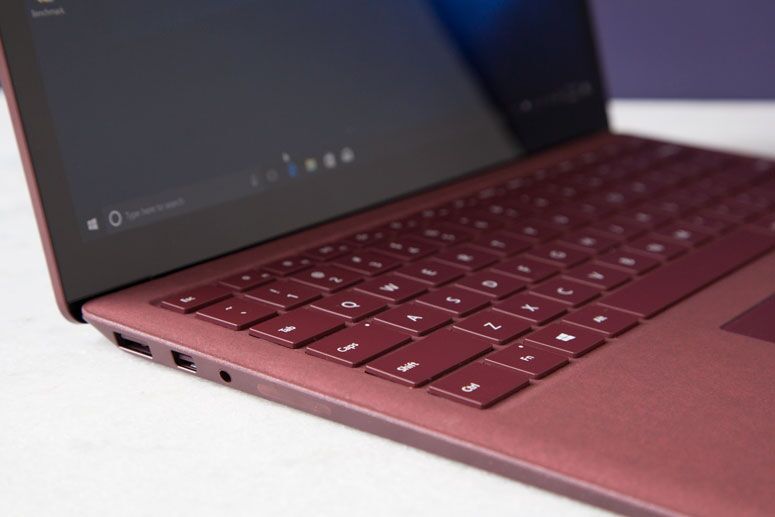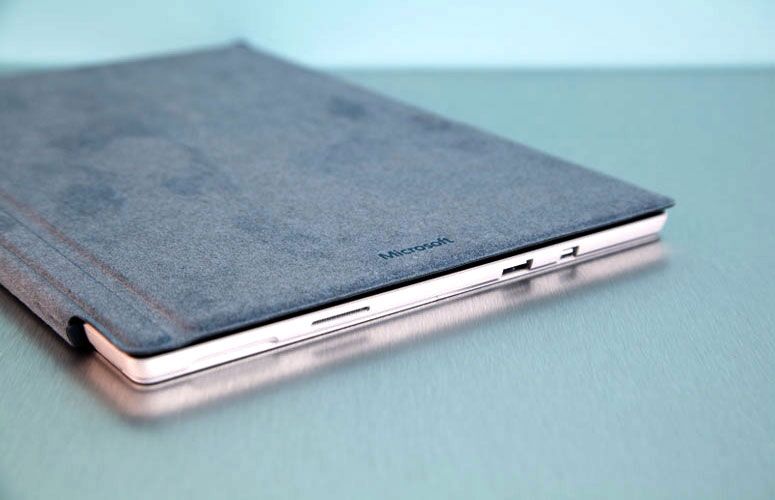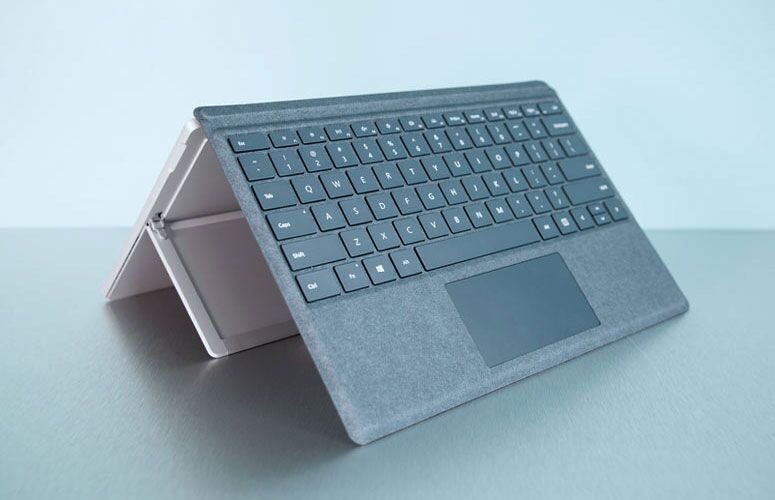Surface Pro vs. Surface Laptop: What Should You Buy?
Microsoft's Surface lineup features the company's vision for premiere Windows 10 experiences. The Surface Laptop (starting at $999) is a standard clamshell notebook, while the Surface Pro (starting at $799) is a 2-in-1 with a detachable keyboard.
- Is the Microsoft Surface Go 2 still worth buying in 2021?
- How to check Windows 11 compatibility using Microsoft’s Health Check app
- How to Create an Android Emulator in Windows
But these two machines do have other differences, including in battery life, included ports and even the available configurations. So which one should you get?
| Row 0 - Cell 0 | Surface Pro | Surface Laptop |
| CPU | 7th-Gen Kaby Lake Intel Core m3, Core i5, Core i7 | 7th-Gen Kaby Lake Intel Core i5 or i7 |
| Starting Price | $799 ($1,058.98 with keyboard and pen) | $999 |
| Battery Life | 7:30 | 9:02 |
| Display | 12.3 inches (2736 x 1827) | 13.5 inches (2736 x 1827) |
| Ports | USB 3.0, microSD, Mini DisplayPort; Headphone, Surface Connector | USB 3.0, Mini DisplayPort, Headphone, Surface Connector |
| Thickness | 0.4 inches | 0.6 inches |
| Weight | 2.4 pounds with keyboard | 2.8 pounds |
Design
Talk about a family resemblance. It's not surprising that the Surface Laptop and Surface Pro look familiar, because they come from the same line of products. Both of them have slightly curved edges with the same 3:2 screen ratio. Both also use Alcantara fabric, which is soft to the touch, on their keyboards. The Laptop has it on the built-in keyboard, while the Surface Laptop's optional-but-not-really-optional Type Cover also uses the high-end fabric.
While the Surface Laptop comes in four colors (platinum, cobalt blue, graphite gold and burgundy), at the moment you can get these colors only on the $1,299 configuration (though that is the one you should buy). The Surface Pro comes only in gray, but you can get the the new Surface Pro Type Cover and Surface Pen in your choice of platinum, cobalt blue, burgundy and black.
The big difference is one of preference. The Surface Laptop is, well, a laptop. You're familiar with it, and it's great on both your lap and a desk. If you try to draw on it, though, the experience won't be as comfortable as on the Surface Pro, as the screen doesn't go flat. The Surface Pro isn't as sturdy on your lap, thanks to its kickstand, but is easier to draw or write on and can be used as a tablet.
Winner: Draw. Both are beautiful devices, but color options mean you have to pay for beefier specs (Surface Laptop) or a keyboard that isn't in the box (Surface Pro).
Ports
Neither device is particularly heavy on ports.
Sign up to receive The Snapshot, a free special dispatch from Laptop Mag, in your inbox.
The Surface Laptop has a single full-sized USB 3.0 port, a Mini DisplayPort for external monitors, a headphone jack and the proprietary Surface Connector for charging and connecting to the $199 Surface Dock.
The Surface Pro has the exact same set of ports, with one addition: a microSD card reader placed behind the kickstand.
Perhaps what's more notable is what isn't on Microsoft's devices. Neither uses USB Type-C for charging or data, which is a noticeable omission for devices you'll likely be keeping for a few years as USB-C accessories become more popular.
Winner: Surface Pro. The 2-in-1 has a means for expandable storage that the Surface Laptop doesn't offer.
Display
You can't go wrong with either display. In fact, they're quite similar. The Surface Pro sports a smaller, 12.3-inch 2736 x 1827 "PixelSense" display with a 3:2 aspect ratio. The Surface Laptop has a 13.5-inch touch screen with 2256 x 1504 pixels.
In our testing, the Surface Laptop registered 361 nits of brightness on our light meter and covered 135 percent of the sRGB color gamut. The Surface Pro reached 398 nits and covered 140 percent of the color gamut.
Winner: Draw. The Surface Pro's panel gets brighter, while the Surface Laptop's screen is bigger.
Keyboard
The biggest difference between the Surface Pro and the Surface Laptop comes in the keyboards. They look similar, but they're quite different to use.
The Surface Laptop's keyboard has 1.4 millimeters of travel and a comfy Alcantara deck. It's a pleasure to type on. But the Surface Pro uses a detachable Type Cover, which connects with magnets. While the 1.3mm keys are the best you'll get on a detachable 2-in-1, the keyboard isn't as stable, especially when on your lap.
Winner: Surface Laptop. It has deeper key travel and is more stable when you use it on your lap.
Special Features
The Surface line is special in that all of the systems are compatible with Microsoft's great accessories, including the Surface Pen, Surface Mouse and Surface Dial. It's far more natural to use the Pen and Dial on the Pro, though.
The Surface Laptop has one special feature that hobbles it — it comes with Windows 10 S, Microsoft's stripped-down operating system that allows you to use apps only from the Windows Store. This may keep you safe from viruses that come with strange downloads, but it also prevents you from using popular programs like Google's Chrome browser. You can upgrade to Windows 10 Pro for free until the end of the year, but after that, it will cost you $50.
Winner: Surface Pro. It's easier to use with the Surface peripherals, and it comes with a fully featured version of Windows.
Battery Life
If you want long-lasting endurance, go with the Surface Laptop. It ran for 9 hours and 2 minutes on the Laptop Mag Battery Test, which involves browsing the web continuously over Wi-Fi. The Surface Pro suffered from an issue we see on many 2-in-1 detachables: substandard battery life. It ran for 7 hours and 30 minutes, though this run time is an improvement over the previous model.
Winner: Surface Laptop. It ran an hour and a half longer than the Surface Pro.
Value
For a majority of their configurations, the Surface Pro and Surface Laptop have identical prices and specs, including our favorites, $1,299 models with Core i5 CPUs and 256GB SSDs.
The Surface Pro offers two configurations that the Laptop doesn't: a $799 Core m3 model, which, while cheap, won't be a strong performer, and a souped-up $2,699 version with a 1TB SSD, 16GB of RAM and Intel Iris Plus graphics.
But when you buy the Surface Pro, you have to buy a Type Cover separately for a keyboard. And while it's technically optional if you want to use the device only as a tablet, those looking for the machine to be a full laptop really need that keyboard. For the new Surface Pro Signature Type Cover, that's $160 (there's another, non-Alcantara version, but Microsoft's site says that keyboard is "coming soon" and doesn't list a price (for the older Surface Pro 4, it was $130).
Winner: Surface Laptop. You can't get it as specced out as the Surface Pro, but you also don't have to shell out extra money for a keyboard.
Bottom Line
| Row 0 - Cell 0 | Surface Pro | Surface Laptop |
| Design | Row 1 - Cell 1 | Row 1 - Cell 2 |
| Ports | Row 2 - Cell 1 | Row 2 - Cell 2 |
| Display | Row 3 - Cell 1 | Row 3 - Cell 2 |
| Keyboard | Row 4 - Cell 1 | Row 4 - Cell 2 |
| Special Features | Row 5 - Cell 1 | Row 5 - Cell 2 |
| Battery Life | Row 6 - Cell 1 | Row 6 - Cell 2 |
| Value | Row 7 - Cell 1 | Row 7 - Cell 2 |
| SCORE | 4 | 5 |
At 5 to 4, including two tied rounds, the Surface Pro and Surface Laptop both make serious arguments for being the better option. But the Surface Laptop wins because of its longer battery life and because you can start using it to its full potential without buying accessories. Unless you specifically need great inking and drawing features, the Surface Laptop is the better buy.
Andrew is a contributing writer at Laptop Mag. His main focus lies in helpful how-to guides and laptop reviews, including Asus, Microsoft Surface, Samsung Chromebook, and Dell. He has also dabbled in peripherals, including webcams and docking stations. His work has also appeared in Tom's Hardware, Tom's Guide, PCMag, Kotaku, and Complex. He fondly remembers his first computer: a Gateway that still lives in a spare room in his parents' home, albeit without an internet connection. When he’s not writing about tech, you can find him playing video games, checking social media and waiting for the next Marvel movie.









